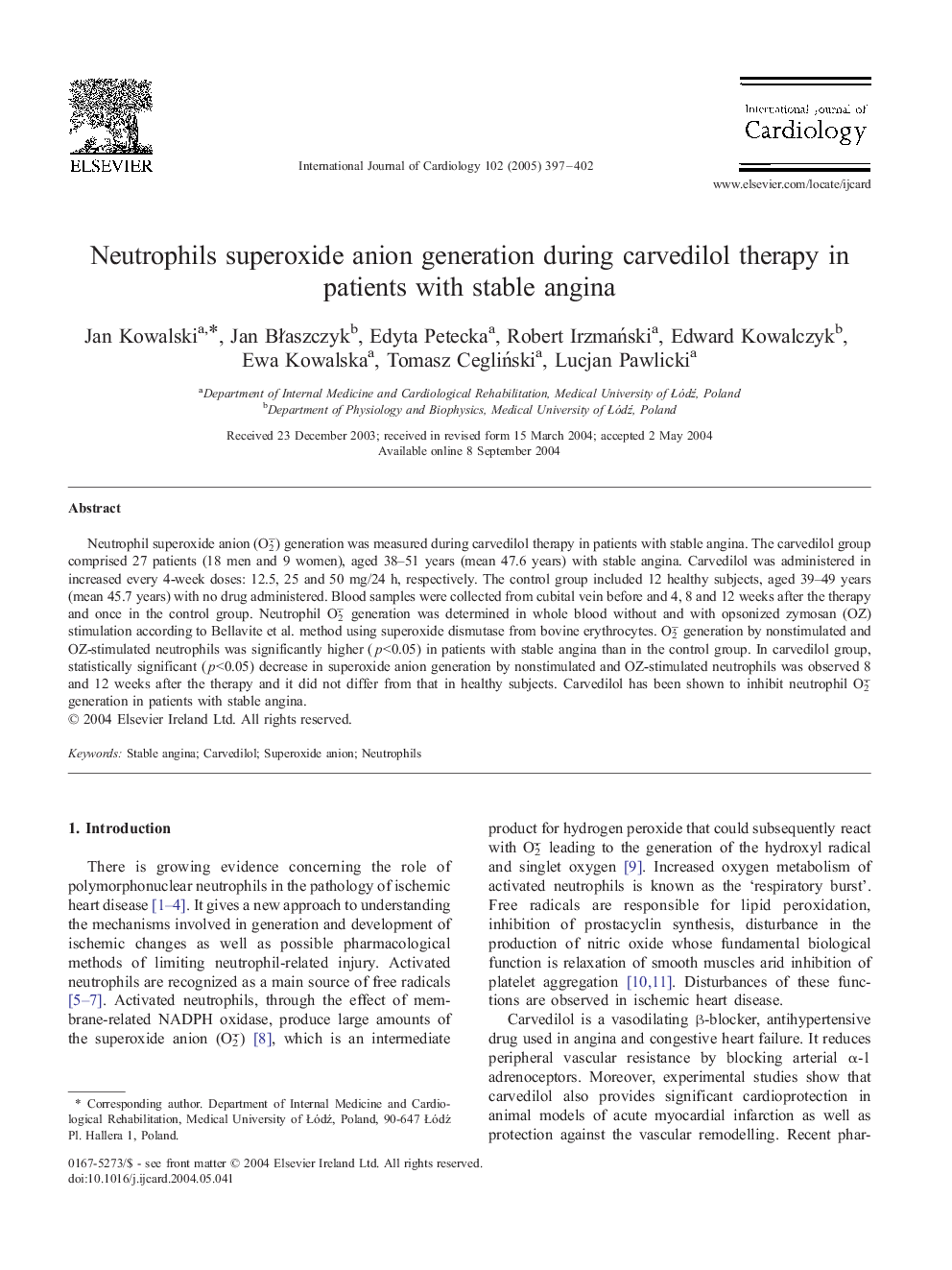| Article ID | Journal | Published Year | Pages | File Type |
|---|---|---|---|---|
| 9956676 | International Journal of Cardiology | 2005 | 6 Pages |
Abstract
Neutrophil superoxide anion (O2⨪) generation was measured during carvedilol therapy in patients with stable angina. The carvedilol group comprised 27 patients (18 men and 9 women), aged 38-51 years (mean 47.6 years) with stable angina. Carvedilol was administered in increased every 4-week doses: 12.5, 25 and 50 mg/24 h, respectively. The control group included 12 healthy subjects, aged 39-49 years (mean 45.7 years) with no drug administered. Blood samples were collected from cubital vein before and 4, 8 and 12 weeks after the therapy and once in the control group. Neutrophil O2⨪ generation was determined in whole blood without and with opsonized zymosan (OZ) stimulation according to Bellavite et al. method using superoxide dismutase from bovine erythrocytes. O2⨪ generation by nonstimulated and OZ-stimulated neutrophils was significantly higher (p<0.05) in patients with stable angina than in the control group. In carvedilol group, statistically significant (p<0.05) decrease in superoxide anion generation by nonstimulated and OZ-stimulated neutrophils was observed 8 and 12 weeks after the therapy and it did not differ from that in healthy subjects. Carvedilol has been shown to inhibit neutrophil O2⨪ generation in patients with stable angina.
Related Topics
Health Sciences
Medicine and Dentistry
Cardiology and Cardiovascular Medicine
Authors
Jan Kowalski, Jan BÅaszczyk, Edyta Petecka, Robert IrzmaÅski, Edward Kowalczyk, Ewa Kowalska, Tomasz CegliÅski, Lucjan Pawlicki,
